
OIL PAINTING—
"CHRIST AND THE SINNER."
COUNTESS KALKREUTH.
GERMANY.
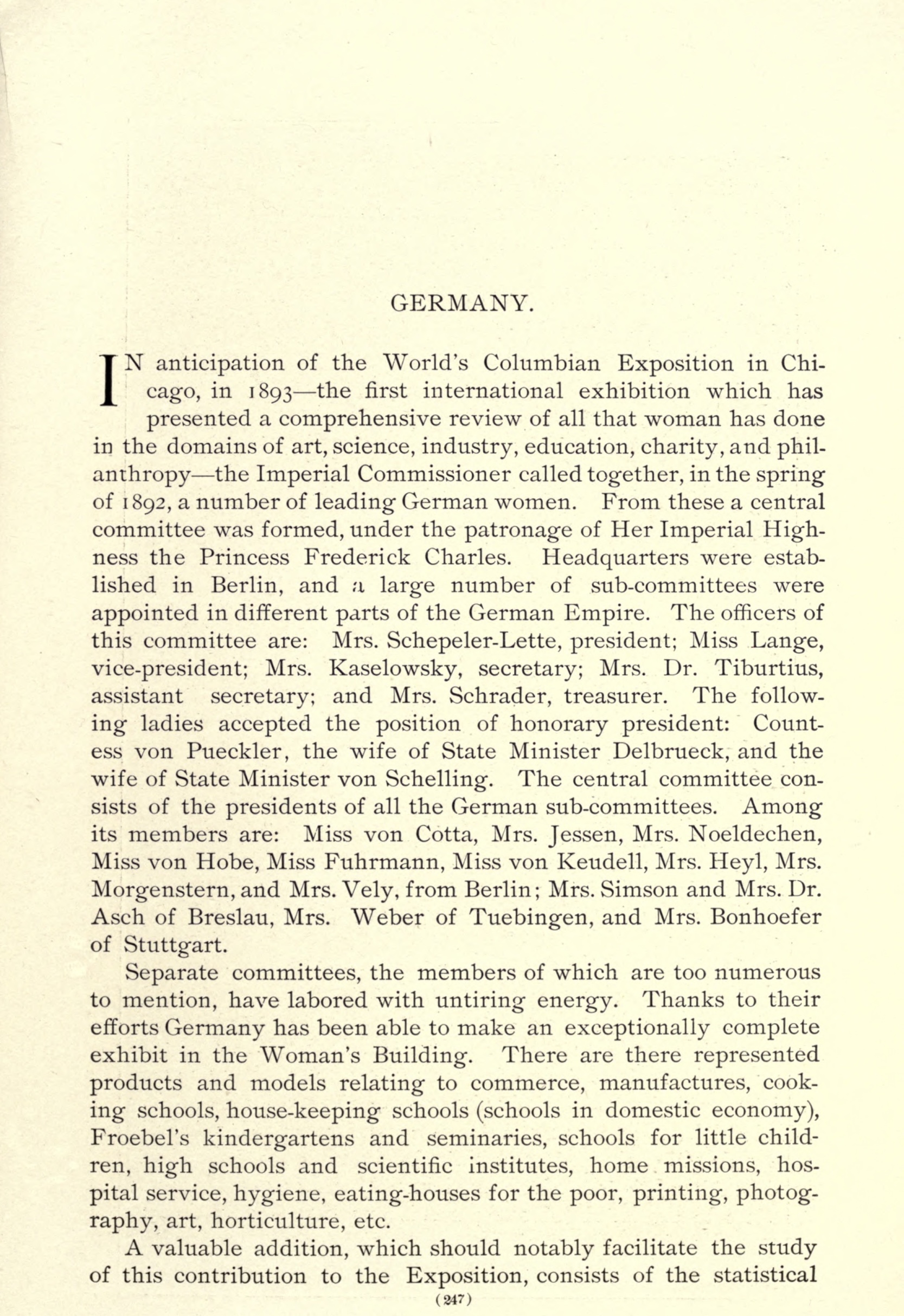
GERMANY.
IN anticipation of the World's Columbian Exposition in Chicago, in 1893—the first international exhibition which has presented a comprehensive review of all that woman has done in the domains of art, science, industry, education, charity, and philanthropy—the Imperial Commissioner called together, in the spring of 1892, a number of leading German women. From these a central committee was formed, under the patronage of Her Imperial Highness the Princess Frederick Charles. Headquarters were established in Berlin, and a large number of sub-committees were appointed in different parts of the German Empire. The officers of this committee are: Mrs. Schepeler-Lette, president; Miss Lange, vice-president; Mrs. Kaselowsky, secretary; Mrs. Dr. Tiburtius, assistant secretary; and Mrs. Schrader, treasurer. The following ladies accepted the position of honorary president: Countess von Pueckler, the wife of State Minister Delbrueck, and the wife of State Minister von Schelling. The central committee consists of the presidents of all the German sub-committees. Among its members are: Miss von Cotta, Mrs. Jessen, Mrs. Noeldechen, Miss von Hobe, Miss Fuhrmann, Miss von Keudell, Mrs. Heyl, Mrs. Morgenstern, and Mrs. Vely, from Berlin; Mrs. Simson and Mrs. Dr. Asch of Breslau, Mrs. Weber of Tuebingen, and Mrs. Bonhoefer of Stuttgart.
Separate committees, the members of which are too numerous to mention, have labored with untiring energy. Thanks to their efforts Germany has been able to make an exceptionally complete exhibit in the Woman's Building. There are there represented products and models relating to commerce, manufactures, cooking schools, house-keeping schools (schools in domestic economy), Froebel's kindergartens and seminaries, schools for little children, high schools and scientific institutes, home missions, hospital service, hygiene, eating-houses for the poor, printing, photography, art, horticulture, etc.
A valuable addition, which should notably facilitate the study of this contribution to the Exposition, consists of the statistical

PORTRAIT.
VILMA PARLARGHY.
GERMANY.
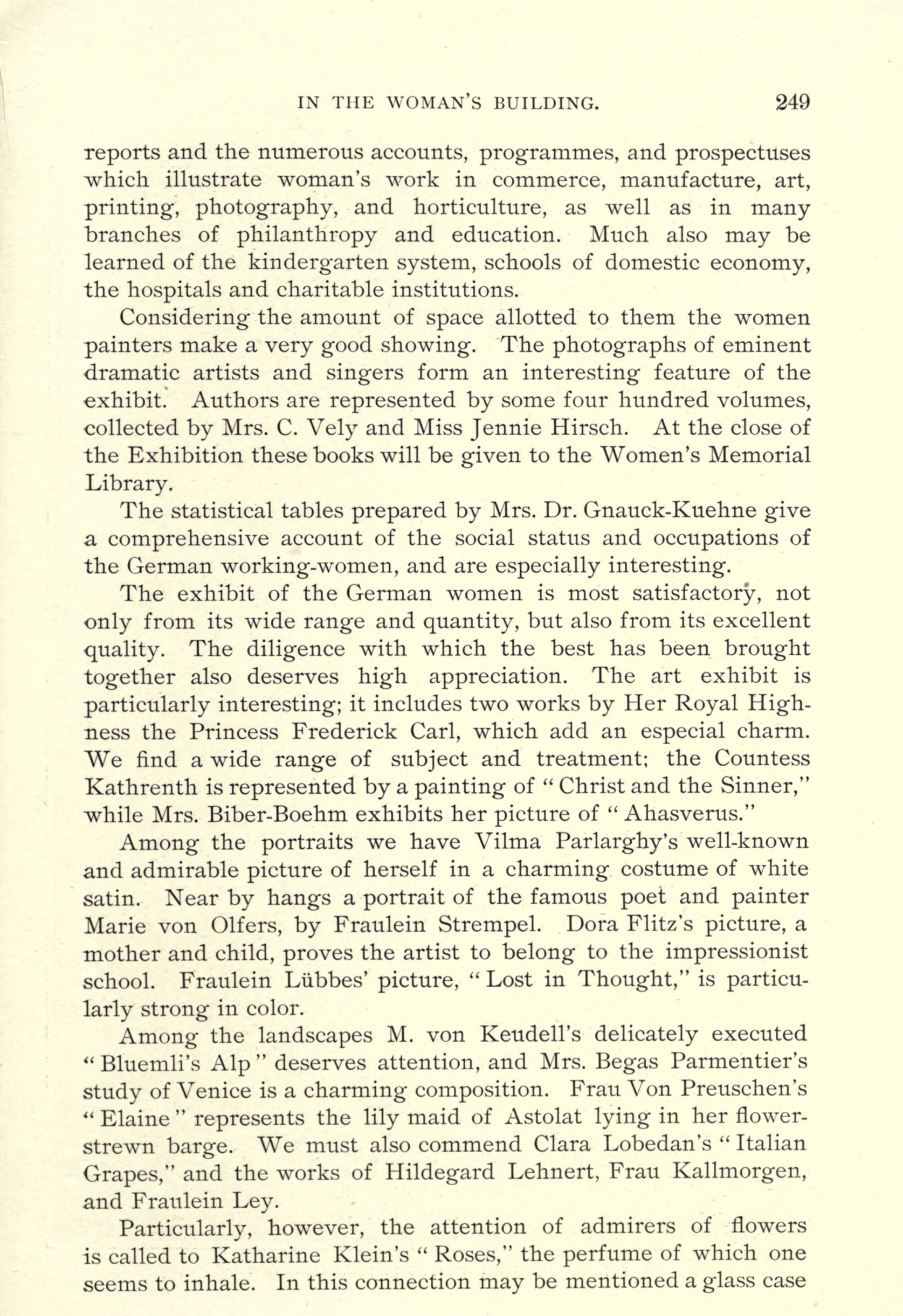
reports and the numerous accounts, programmes, and prospectuses which illustrate woman's work in commerce, manufacture, art, printing, photography, and horticulture, as well as in many branches of philanthropy and education. Much also may be learned of the kindergarten system, schools of domestic economy, the hospitals and charitable institutions.
Considering the amount of space allotted to them the women painters make a very good showing. The photographs of eminent dramatic artists and singers form an interesting feature of the exhibit. Authors are represented by some four hundred volumes, collected by Mrs. C. Vely and Miss Jennie Hirsch. At the close of the Exhibition these books will be given to the Women's Memorial Library.
The statistical tables prepared by Mrs. Dr. Gnauck-Kuehne give a comprehensive account of the social status and occupations of the German working-women, and are especially interesting.
The exhibit of the German women is most satisfactory, not only from its wide range and quantity, but also from its excellent quality. The diligence with which the best has been brought together also deserves high appreciation. The art exhibit is particularly interesting; it includes two works by Her Royal Highness the Princess Frederick Carl, which add an especial charm. We find a wide range of subject and treatment: the Countess Kathrenth is represented by a painting of "Christ and the Sinner," while Mrs. Biber-Boehm exhibits her picture of "Ahasverus."
Among the portraits we have Vilma Parlarghy's well-known and admirable picture of herself in a charming costume of white satin. Near by hangs a portrait of the famous poet and painter Marie von Olfers, by Fraulein Strempel. Dora Flitz's picture, a mother and child, proves the artist to belong to the impressionist school. Fraulein Lübbes' picture, "Lost in Thought," is particularly strong in color.
Among the landscapes M. von Keudell's delicately executed "Bluemli's Alp" deserves attention, and Mrs. Begas Parmentier's study of Venice is a charming composition. Frau Von Preuschen's "Elaine" represents the lily maid of Astolat lying in her flower-strewn barge. We must also commend Clara Lobedan's "Italian Grapes," and the works of Hildegard Lehnert, Frau Kallmorgen, and Fraulein Ley.
Particularly, however, the attention of admirers of flowers is called to Katharine Klein's "Roses," the perfume of which one seems to inhale. In this connection may be mentioned a glass case

EMBROIDERY ON WHITE SATIN.
GERMANY.
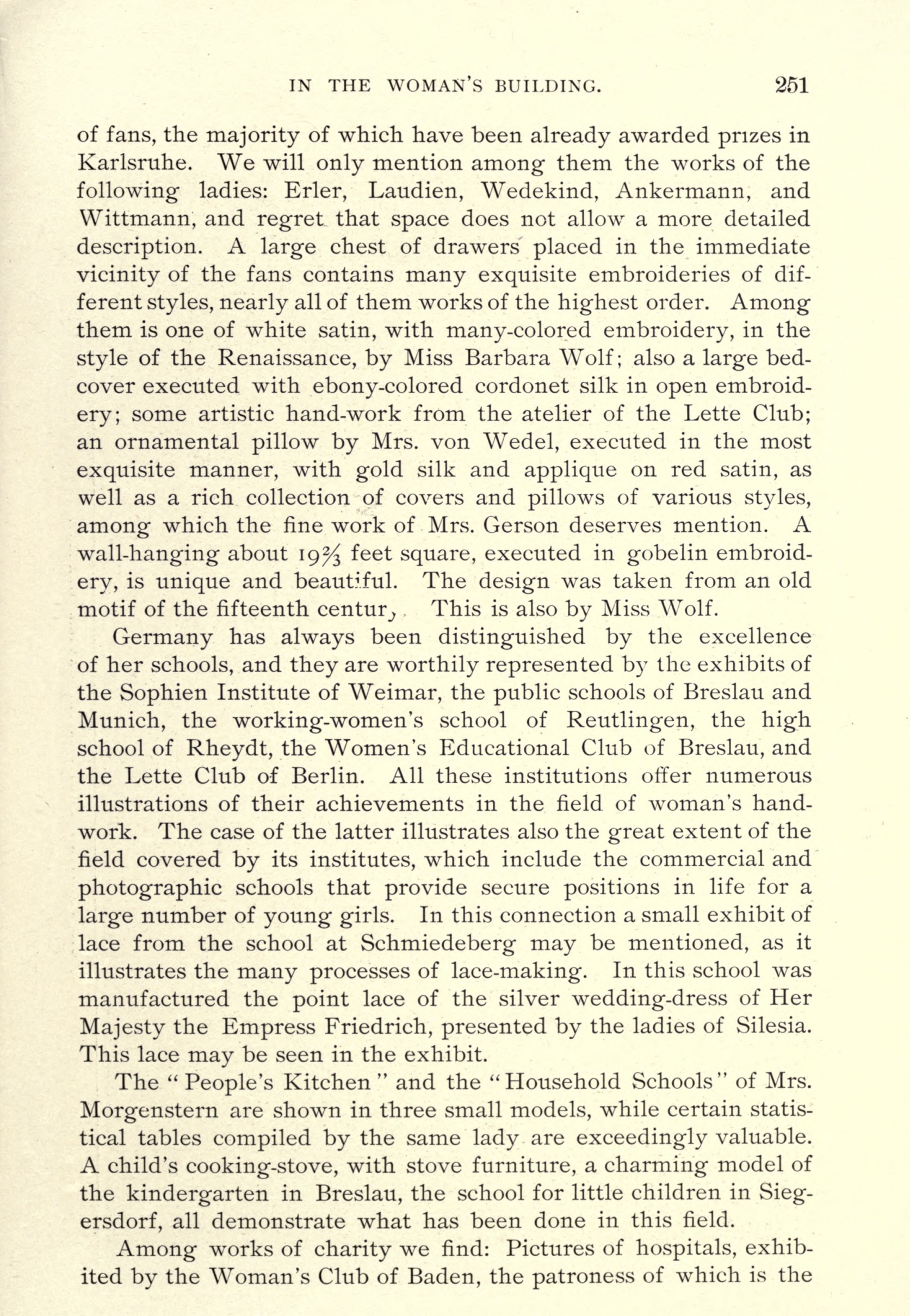
of fans, the majority of which have been already awarded prizes in Karlsruhe. We will only mention among them the works of the following ladies: Erler, Laudien, Wedekind, Ankermann, and Wittmann, and regret that space does not allow a more detailed description. A large chest of drawers placed in the immediate vicinity of the fans contains many exquisite embroideries of different styles, nearly all of them works of the highest order. Among them is one of white satin, with many-colored embroidery, in the style of the Renaissance, by Miss Barbara Wolf; also a large bedcover executed with ebony-colored cordonet silk in open embroidery; some artistic hand-work from the atelier of the Lette Club; an ornamental pillow by Mrs. von Wedel, executed in the most exquisite manner, with gold silk and applique on red satin, as well as a rich collection of covers and pillows of various styles, among which the fine work of Mrs. Gerson deserves mention. A wall-hanging about 19 2/3 feet square, executed in gobelin embroidery, is unique and beautiful. The design was taken from an old motif of the fifteenth century. This is also by Miss Wolf.
Germany has always been distinguished by the excellence of her schools, and they are worthily represented by the exhibits of the Sophien Institute of Weimar, the public schools of Breslau and Munich, the working-women's school of Reutlingen, the high school of Rheydt, the Women's Educational Club of Breslau, and the Lette Club of Berlin. All these institutions offer numerous illustrations of their achievements in the field of woman's handwork. The case of the latter illustrates also the great extent of the field covered by its institutes, which include the commercial and photographic schools that provide secure positions in life for a large number of young girls. In this connection a small exhibit of lace from the school at Schmiedeberg may be mentioned, as it illustrates the many processes of lace-making. In this school was manufactured the point lace of the silver wedding-dress of Her Majesty the Empress Friedrich, presented by the ladies of Silesia. This lace may be seen in the exhibit.
The "People's Kitchen" and the "Household Schools" of Mrs. Morgenstern are shown in three small models, while certain statistical tables compiled by the same lady are exceedingly valuable. A child's cooking-stove, with stove furniture, a charming model of the kindergarten in Breslau, the school for little children in Siegersdorf, all demonstrate what has been done in this field.
Among works of charity we find: Pictures of hospitals, exhibited by the Woman's Club of Baden, the patroness of which is the

OIL PAINTING—FRUIT.
MOLLY CRAMER.
GERMANY.
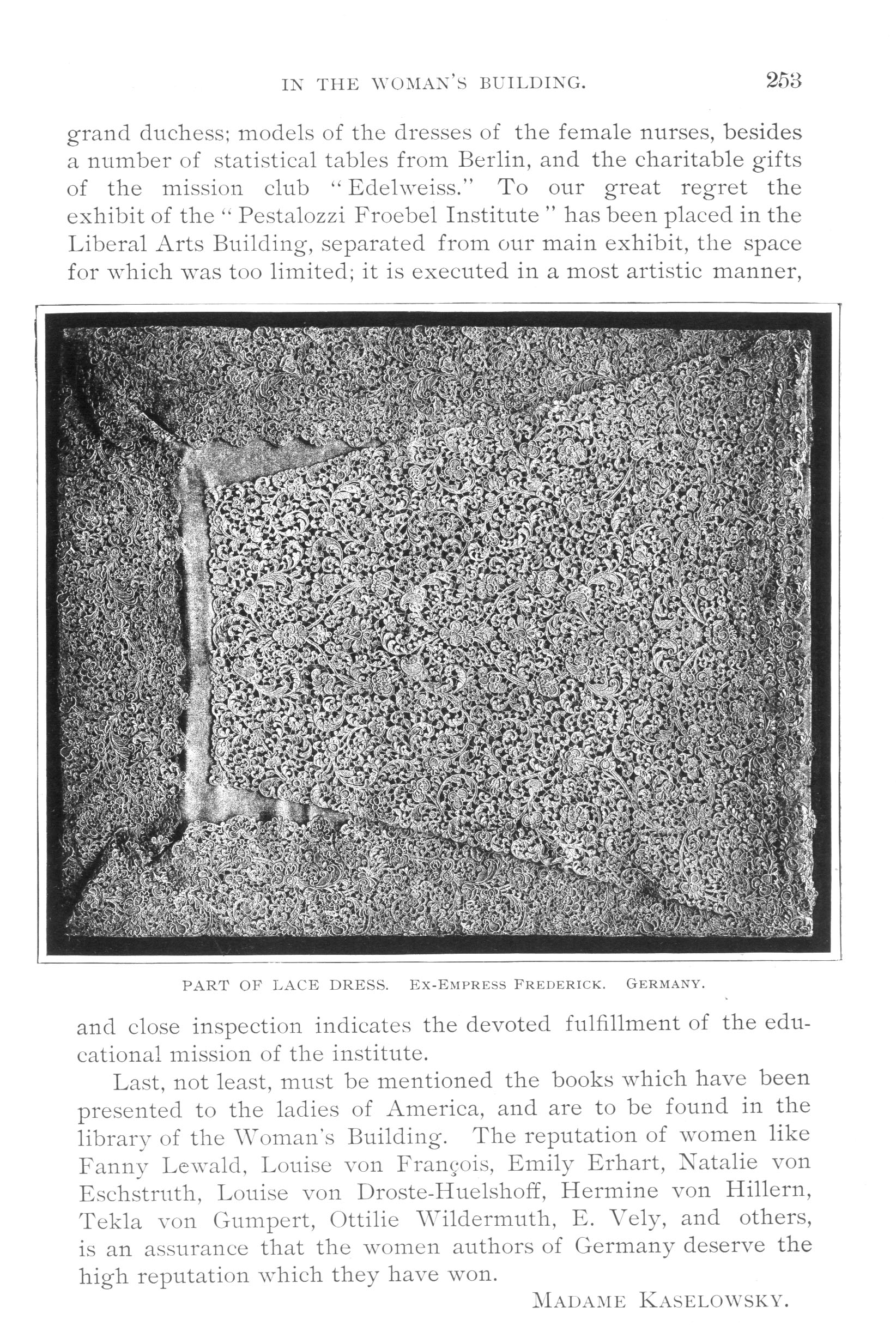
PART OF LACE DRESS.
EX-EMPRESS FREDERICK.
GERMANY.
grand duchess; models of the dresses of the female nurses, besides a number of statistical tables from Berlin, and the charitable gifts of the mission club "Edelweiss." To our great regret the exhibit of the "Pestalozzi Froebel Institute" has been placed in the Liberal Arts Building, separated from our main exhibit, the space for which was too limited; it is executed in a most artistic manner, and close inspection indicates the devoted fulfillment of the educational mission of the institute.
Last, not least, must be mentioned the books which have been presented to the ladies of America, and are to be found in the library of the Woman's Building. The reputation of women like Fanny Lewald, Louise von François, Emily Erhart, Natalie von Eschstruth, Louise von Droste-Huelshoff, Hermine von Hillern, Tekla von Gumpert, Ottilie Wildermuth, E. Vely, and others, is an assurance that the women authors of Germany deserve the high reputation which they have won.
MADAME KASELOWSKY.
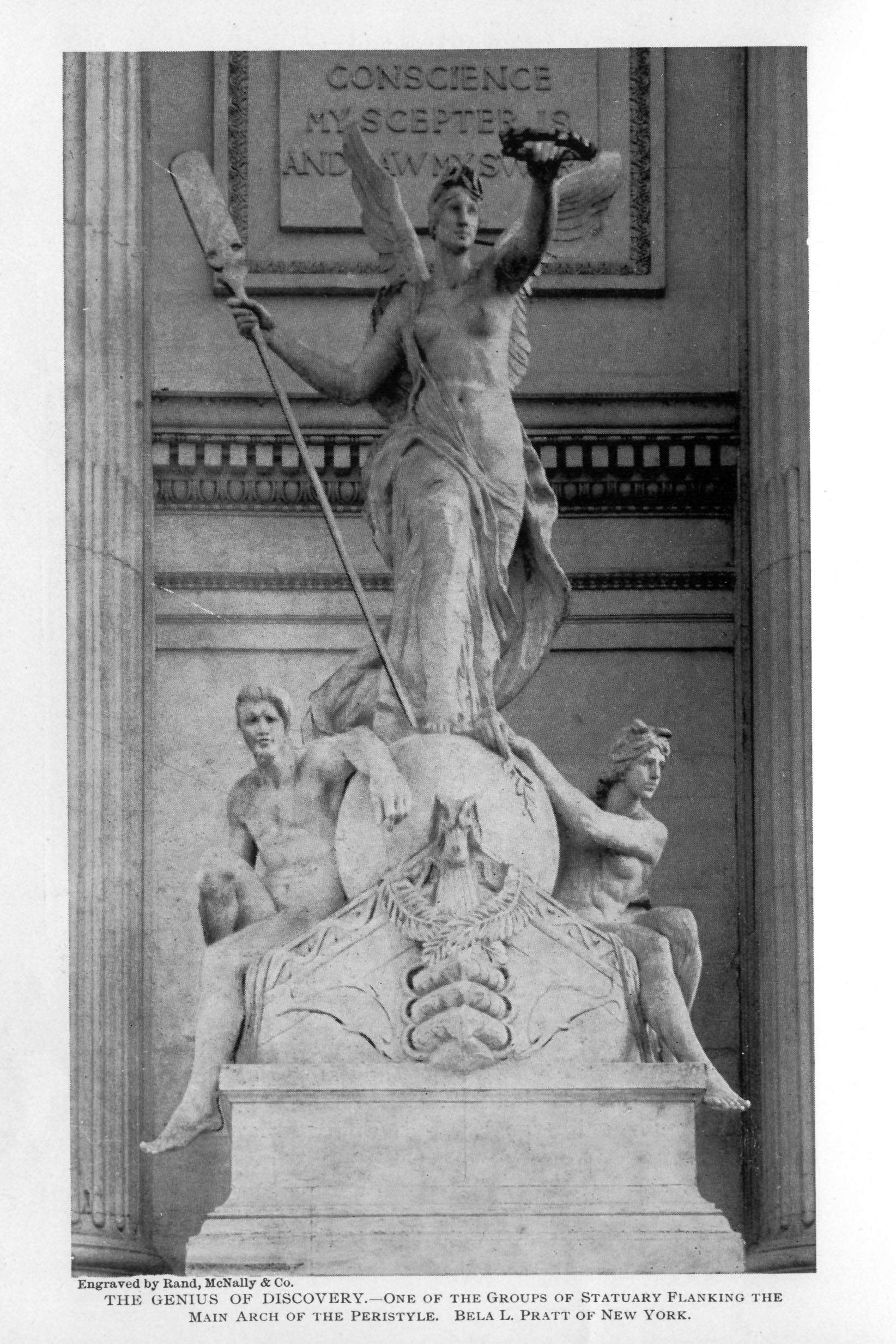
Engraved by Rand, McNally & Co.
THE GENIUS OF DISCOVERY.—
ONE OF THE GROUPS OF STATUARY FLANKING THE MAIN ARCH OF THE PERISTYLE.
BELA L. PRATT OF NEW YORK.
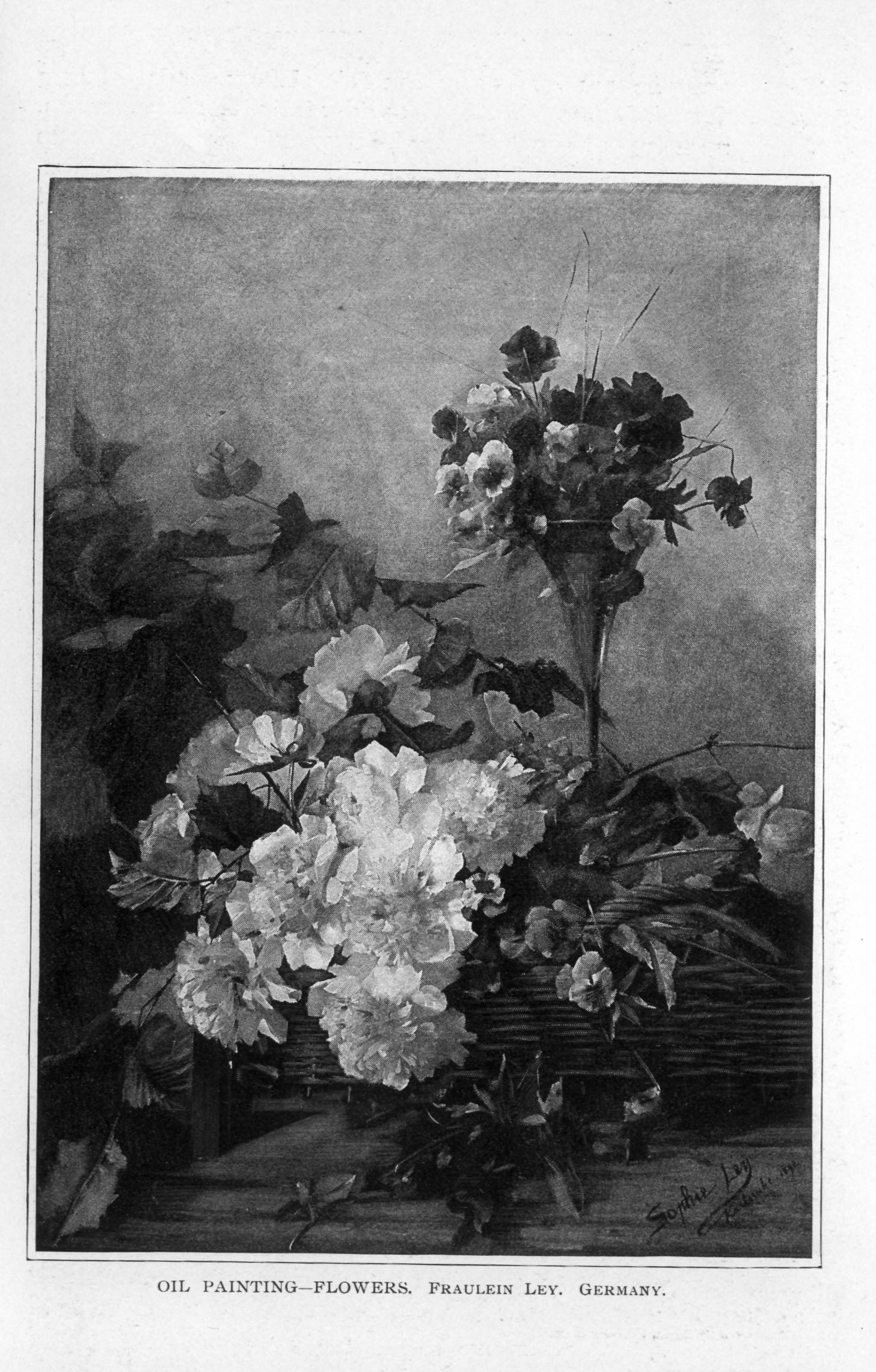
OIL PAINTING—FLOWERS.
FRAULEIN LEY.
GERMANY.
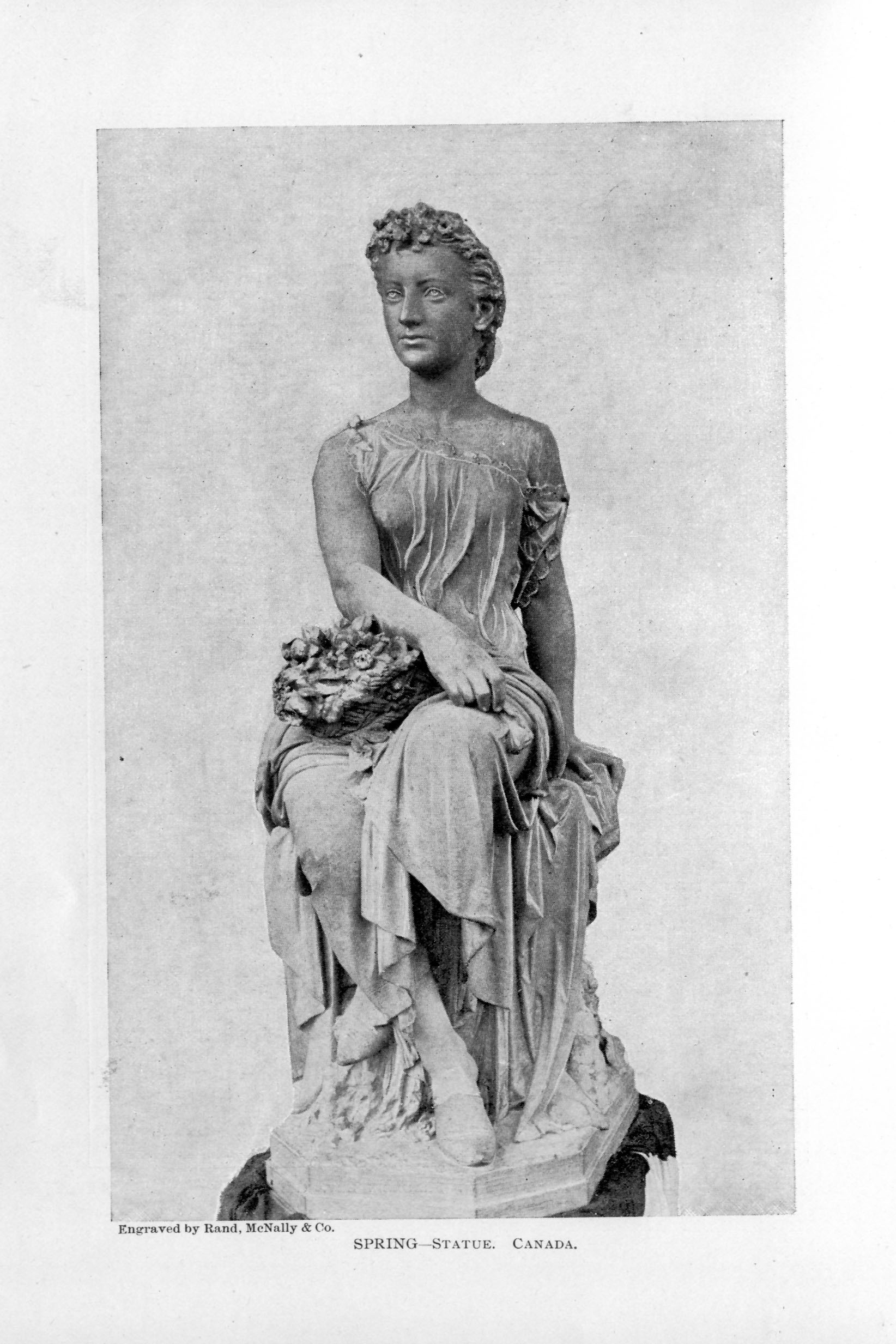
Engraved by Rand, McNally & Co.
SPRING—STATUE.
CANADA.